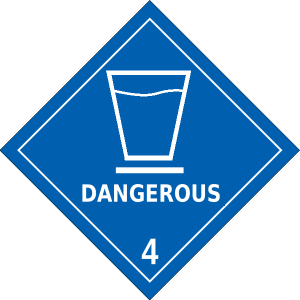 In April of 2014, the city of Flint began to get its drinking water from the Flint River, switching away from Lake Huron water supplied by the Detroit Water and Sewerage Department. On top of the problems with e. coli bacteria and other contaminants and then the subsequent leaching of lead from home water lines, the Snyder administration is now admitting that there has been a massive spike in cases of Legionnaire’s Disease, a respiratory infection caused by a strain of water-borne bacteria known as Legionella. It is most often contracted by breathing in mists or vapors of water contaminated with Legionella.
In April of 2014, the city of Flint began to get its drinking water from the Flint River, switching away from Lake Huron water supplied by the Detroit Water and Sewerage Department. On top of the problems with e. coli bacteria and other contaminants and then the subsequent leaching of lead from home water lines, the Snyder administration is now admitting that there has been a massive spike in cases of Legionnaire’s Disease, a respiratory infection caused by a strain of water-borne bacteria known as Legionella. It is most often contracted by breathing in mists or vapors of water contaminated with Legionella.
Prior to 2014, Genesee County typically saw 8-10 cases of Legionnaire’s disease each year. However, since June of that year, there have been 87 cases, ten of which resulted in death.
Via reporting from The Detroit News:
“This is something that has been actively worked on with our federal partners since those spikes were identified over a year and a half ago,” Michigan Chief Medical Executive Dr. Eden Wells said at a Detroit news conference.“Not all people necessarily get sick when exposed,” Wells said. “Those who are elderly or have underlying immune system problems are more susceptible to getting it.”
Snyder said he became aware of the information a couple of days ago and thought it should be shared with the public.
My own personal experience with Legionnaire’s disease comes from my background as a water chemist. At one time I did R&D on water treatment chemicals for cooling tower water, water used in large-scale air conditioning systems. Proper treatment of cooling tower water to prevent the growth of bacteria, including Legionella, is crucial to avoiding health and safety issues.
Here’s more on Legionnaire’s Disease from the Mayo Clinic:
Legionnaires’ disease is a severe form of pneumonia — lung inflammation usually caused by infection. Legionnaires’ disease is caused by a bacterium known as legionella… Older adults, smokers and people with weakened immune systems are particularly susceptible to Legionnaires’ disease.The legionella bacterium also causes Pontiac fever, a milder illness resembling the flu. Separately or together, the two illnesses are sometimes called legionellosis. Pontiac fever usually clears on its own, but untreated Legionnaires’ disease can be fatal. Although prompt treatment with antibiotics usually cures Legionnaires’ disease, some people continue to experience problems after treatment.
Particularly fond of warm water, Legionella can also be found in hot tubs, hot water tanks, decorative fountains, and large plumbing systems. Notably, Legionnaire’s Disease is NOT a communicable disease which can be spread from person to person. It can only be gotten by getting water containing Legionella bacteria into the lungs.
So far the source of the outbreak has not been determined.



